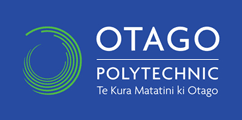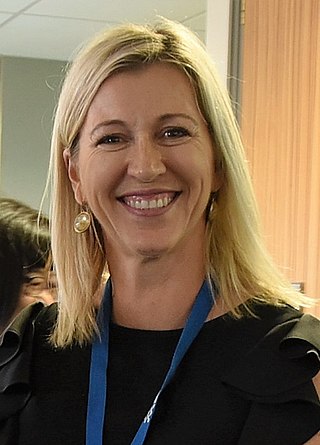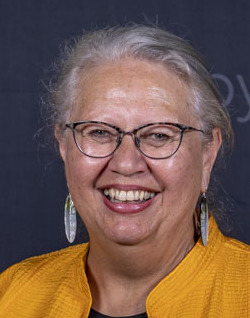
Massey University is a university based in New Zealand, with significant campuses in Palmerston North, Auckland and Wellington. Massey University has approximately 27,533 students, 18,358 of whom study either partly or fully by distance. Research is undertaken on all three campuses and people from over 130 countries study at the university.

Auckland University of Technology is a university in New Zealand, formed on 1 January 2000 when a former technical college was granted university status. AUT is New Zealand's third largest university in terms of total student enrolment, with approximately 29,100 students enrolled across three campuses in Auckland. It has five faculties, and an additional three specialist locations: AUT Millennium, Warkworth Radio Astronomical Observatory and AUT Centre for Refugee Education.

The University of Auckland is a public research university based in Auckland, New Zealand. The institution was established in 1883 as a constituent college of the University of New Zealand. Originally it was housed in a disused courthouse. Today, the University of Auckland is New Zealand's largest university by enrolment, hosting about 40,000 students on five Auckland campuses. The City Campus, in the Auckland CBD, has the bulk of the students and faculties. There are eight faculties, including a law school, as well as three associated research institutes.

Margaret Elizabeth Austin is a former New Zealand politician. She was an MP from 1984 to 1996, representing first the Labour Party and then briefly United New Zealand.

The Royal Society Te Apārangi is an independent, statutory not-for-profit body in New Zealand providing funding and policy advice in the fields of sciences and the humanities.

Otago Polytechnic was a public New Zealand tertiary education institute, centred in Dunedin with additional campuses in Cromwell and Auckland. Otago Polytechnic provided career-focused education and training, offering a range of New Zealand accredited postgraduate qualifications, degrees, diplomas and certificates at levels 2–10. In November 2022, it was formally merged into the new national mega polytechnic Te Pūkenga, ending its existence as an independent entity.

Sir Peter David Gluckman is a New Zealand scientist. Originally trained as a paediatrician, he served as the inaugural Chief Science Advisor to the New Zealand Prime Minister from 2009 to 2018. He is a founding member and was inaugural chair of the International Network for Government Science Advice, and is president of the International Science Council.

Tertiary education in New Zealand is provided by universities, institutes of technology and polytechnics, private training establishments, industry training organisations, and wānanga. It ranges from informal non-assessed community courses in schools through to undergraduate degrees and research-based postgraduate degrees. All post-compulsory education is regulated within the New Zealand Qualifications Framework, a unified system of national qualifications for schools, vocational education and training, and 'higher' education. The New Zealand Qualifications Authority (NZQA) is responsible for quality assuring all courses and tertiary education organisations other than universities. Under the Education Act 1989, The Committee on University Academic Programmes (CUAP) and the Academic Quality Agency (AQA) have delegated authority for quality assurance of university education. The Tertiary Education Commission (TEC) is responsible for administering the funding of tertiary education, primarily through negotiated investment plans with each funded organisation.

The Pacific Media Network is a New Zealand radio network and pan-Pasifika national broadcasting network, currently owned and operated by the National Pacific Radio Trust and partly funded by the Government. It includes the PMN 531 radio network, PMN News and Auckland-only broadcast station PMN NIU combined are accessible to an estimated 92 percent of the country's Pacific population. The network targets both first-generation Pacific migrants and New Zealand-born people with Pacific heritage. As of 2009, it was the only specifically pan-Pacific broadcaster in New Zealand.

Dianne Christine McCarthy is a New Zealand scientist and professional director, who was the chief executive of the Royal Society of New Zealand between 2007 and 2014. She lives in Blenheim.

Miriam Cather Simpson is a New Zealand-American physics/chemistry academic and entrepreneur. She is currently a professor at the University of Auckland, a joint appointment between the physics and chemistry departments. She is the founder of the Photon Factory laser lab at the University of Auckland and the chief science officer for two spin-off companies, Engender Technologies and Orbis Diagnostics. She is an Associate Investigator for the Dodd-Walls Centre for Photonic and Quantum Technologies and an Emeritus Investigator for the MacDiarmid Institute for Advanced Materials and Nanotechnology. She was awarded the Royal Society Te Apārangi Pickering Medal in 2019. She has a strong focus on teaching, mentoring and public outreach and is an outspoken advocate for issues of gender equality and ethics in science.

Merryn Tawhai is a New Zealand engineering scientist. She is a professor at the University of Auckland, director of the Auckland Bioengineering Institute, where she was a fellow from 2002, and a former director of MedTech CoRE. She is known for the development of mathematical models of the lungs that will help scientists understand differences between physiologically normal lungs and the pathological changes that might occur in a disease. She was inducted into the International Academy of Medical and Biological Engineering in June 2018. In November 2018, Tawhai was elected a Fellow of the Royal Society of New Zealand.
Open access in New Zealand consists of policies and norms affecting making research outputs, data, and education materials openly available. This is influenced by tertiary education institutions as well as national government and changing international norms. The New Zealand Government has applied open access principles to its own work, adopting the New Zealand Government Open Access Licensing Framework (NZGOAL). It has not mandated that these apply to schools or the tertiary sector or to research funding agencies. Some tertiary education institutions have developed their own open access guidelines or policies but neither of the two major research funding agencies in New Zealand—the Marsden Fund and the Health Research Council—have done so, unlike Australia, Canada, Europe or the United States.
Roger John Horrocks is a New Zealand writer, film-maker, educator and cultural activist.
Te Pūnaha Matatini Centre for Complex Systems and Networks is a New Zealand Centre of Research Excellence that focusses on interpreting data about the environment, economy, and society to inform policy decision-making and public debate. Funded by the New Zealand Government, it is hosted by the University of Auckland and works in partnership with other universities and organisations, including Manaaki Whenua – Landcare Research. During the COVID-19 pandemic, Te Pūnaha Matatini developed mathematical models within different scenarios and provided data to inform the response of the New Zealand Government to the pandemic. Shaun Hendy, David Hayman and Michael Plank were among the high-profile members of the organisation who regularly commented on the COVID-19 pandemic in the news media at the time. The leadership of Te Pūnaha Matatini investigators has supported the setting up of independent research programmes, including Covid-19 Modelling Aotearoa and The Disinformation Project.
Cameron Cunningham (Cami) Sawyer is an American mathematician who has worked in New Zealand at Massey University and the Ministry of Education. Trained in algebraic topology, her work in New Zealand has focused on mathematics education, educational technology, distance learning, and the needs of Māori students in mathematics.
Ngā Pae o te Māramatanga (NPM) is New Zealand's Māori Centre of Research Excellence (CoRE). It was established in 2002 and is hosted by the University of Auckland with 21 research partners and is funded, like other CoRE's, by the Tertiary Education Commission. The mission was to conduct research for, with and by Māori communities which leads to transformation and positive change.
The Centres of Research Excellence (CoREs) are interorganisational research networks in New Zealand funded through the Centres of Research Excellence scheme, which is administered by the Tertiary Education Commission (TEC).

Yvonne Jasmine Te Ruki Rangi o Tangaroa Underhill is a New Zealand Pacific development geographer. She is a professor at the University of Auckland, where she teaches Pacific studies.














